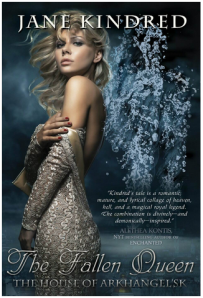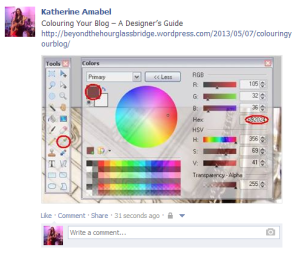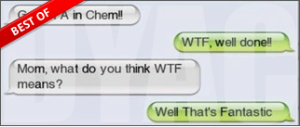If anyone’s ever typed the heading ‘synopsis’, then run away for an hour, I get it. Another person who gets it is Jane Kindred, author of The House of Arkhangel’sk trilogy, whose been awesome enough to share her synopsis tips, AND the synopses which helped land her a contract with entangled publishing. Plus, to celebrate the release of the final book in the series, Jane is running a super-massive giveaway which you can enter, right at the end of this post! So what is Jane’s synopsis secret? The snowflake method. Full details are well worth a look and can be found here, but essentially it’s about taking a sentence and building from there. So:
- Summarize your novel in a sentence.
- Expand that sentence to include major plot points. But it should only be one paragraph, so you’re essentially looking at your setup, two-three disasters and your conclusion.
- Do the same for your main character/s, with a one sentence summary of their story, and the rest of the paragraph outlining their definite and abstract goals, what’s stopping them, and their epiphany.
- Expand each sentence of your summary paragraph into a paragraph, making each on (bar the conclusion) end in disaster.
- Do the same for your character/s, so you have character driven synopses, too.
This can actually be particularly useful for writing a query or blurb, because it allows you to blend character-driven and plot-driven storylines, as Jane has so cleverly done in the blurb for the first in her series, The Fallen Queen.
Until her cousin slaughtered the supernal family, Anazakia’s father ruled the Heavens, governing noble Host and Fallen peasants alike. Now Anazakia is the last grand duchess of the House of Arkhangel’sk, and all she wants is to stay alive.
Hunted by Seraph assassins, Anazakia flees Heaven with two Fallen thieves—fire demon Vasily and air demon Belphagor, each with their own nefarious agenda—who hide her in the world of Man. The line between vice and virtue soon blurs, and when Belphagor is imprisoned, the unexpected passion of Vasily warms her through the Russian winter.
Heaven seems a distant dream, but when Anazakia learns the truth behind the celestial coup, she will have to return to fight for the throne—even if it means saving the man who murdered everyone she loved.
If you think it sounds awesome, (particularly that last line!), it was. The Fallen Queen was so brilliantly written, in character, voice, scenery and plot, that it inspired the first in my ‘reviews from a writer’s perspective‘ series. Now, let’s look at the summarized synopsis that goes with it:
Grand Duchess ANAZAKIA may be an angel, but the youngest daughter of Heaven’s ruling house is also a bit of a hellion. While she gambles in the demon district, her cousin KAE, beguiled by the mysterious AEVAL, turns on Anazakia’s family and murders them all. With no one else to trust, Anazakia flees Elysium with demons BELPHAGOR and VASILY who promise to hide her among the Fallen in the earthly realm of Russia. Despite her disapproval of their intimate relationship, natural animosity transforms into grudging respect and a fragile friendship. But when Belphagor disappears with her signet ring, Anazakia finds herself comforting a heartbroken demon. No one is more surprised than Vasily when she ends up in his bed.
When Heaven’s henchmen catch Anazakia, she finds Belphagor at the palace in Elysium. Unaware that his attempt to bargain for her life has made him Queen Aeval’s pet slave, she believes the worst of him and bitterly reveals she is carrying Vasily’s child. Belphagor protects her from Aeval’s cruelty despite his shock. When she tries to escape, Anazakia stumbles into a surreal game of cards with Belphagor and her cousin Kae and realizes Kae is irredeemably mad. Even so, he is the only one to help deliver her baby when her pains come, and when a demon workers’ riot sets the palace ablaze on the eve of her execution, Kae rescues her from her room.
Amid the chaos, Vasily arrives with an army of Fallen, but the Queen refuses to give up Anazakia’s baby until a spark of power flares from the half-demon child. Aeval is powerless against the baby’s radiance. Anazakia tries to free Kae from the Queen as flames overtake the palace, but he is lost in his delusions. The demons have become her family, and Anazakia returns with them to the earthly city that bears her family’s name, leaving Kae to Aeval and madness.
 What I like about this is the subtle character plots, in phrases like natural animosity, grudging respect and fragile friendship. And for those who worry that a short synopsis doesn’t provide time to establish their voice, this certainly does. It’s a hint of how eloquently the novel is written, and tells a lot about the upbringing of this character – as in phrases like ‘when her pains come’. I also love the hint of her darker, rebellious side, when she ends up in a demon’s bed, and he’s the more surprised.
What I like about this is the subtle character plots, in phrases like natural animosity, grudging respect and fragile friendship. And for those who worry that a short synopsis doesn’t provide time to establish their voice, this certainly does. It’s a hint of how eloquently the novel is written, and tells a lot about the upbringing of this character – as in phrases like ‘when her pains come’. I also love the hint of her darker, rebellious side, when she ends up in a demon’s bed, and he’s the more surprised.
Now let’s take the short synopsis and expand it. All the good stuff stays there, but with a few more, uncluttered details, to give an agent an idea what’s going on.
Grand Duchess ANAZAKIA may be an angel, but the youngest daughter of Heaven’s ruling house is also a bit of a hellion. While she sneaks out to gamble in the demon district, her cousin KAE, beguiled by the mysterious AEVAL, turns on Anazakia’s family and murders them all. With no one else to trust, Anazakia flees Elysium with demons BELPHAGOR and VASILY who promise to hide her among the Fallen in the earthly realm of Russia.
In the world of Man, Anazakia discovers why demons are so fond of falling. The dominant element of every celestial being manifests as a pair of wings, and hers can raise a storm. When the fiery Seraphim of Heaven’s brute squad capture Vasily and torture him for refusing to give her up, Anazakia releases a tempest with her wings to vanquish them to Heaven. But the Seraphim will not stay vanquished for long.
As the trio flees St. Petersburg for the Russian countryside, natural animosity transforms into grudging respect and a fragile friendship—despite Anazakia’s discomfort when she discovers the demons’ intimate relationship. But when Belphagor disappears with her signet ring after setting them up in a quaint, country dacha, Anazakia finds herself comforting a heartbroken demon. No one is more surprised than Vasily when she ends up in his bed.
Their romantic idyll is interrupted when a magical charm transports Anazakia to Heaven by mistake, delivering her into the hands of the Seraphim and Queen Aeval. Imprisoned in the palace, Anazakia finds Belphagor in an apparent position of privilege. Unaware that his attempt to bargain for her life has made him Queen Aeval’s pet slave, she believes the worst of him and bitterly reveals she is carrying Vasily’s child. Despite his shock, Belphagor does what he can to protect her from Aeval’s cruelty.
When Anazakia tries to escape as her due date draws near, she stumbles into a surreal game of cards with Belphagor and her cousin Kae and realizes Kae is irredeemably mad. Even so, he is the only one to help deliver her baby when her pains come, and when a demon workers’ riot sets the palace ablaze on the eve of her execution, Kae rescues her from her room.
Amid the chaos, Vasily arrives with an army of Fallen, but the Queen refuses to give up Anazakia’s baby until a spark of radiance flares from the half-demon child. Aeval is powerless against the baby’s hybrid element. Anazakia tries to free Kae from the Queen as flames overtake the palace, but he is lost in his delusions. The demons have become her family, and Anazakia returns with them to the world of Man, leaving Kae to Aeval and madness.
There you have it! Start with a sentence and build from there, and don’t forget to do the same thing with your character’s too. And finally, the contest. Jane is giving away: 
- A $50 gift card to Barnes & Noble or Amazon
- Signed print copies of the entire House of Arkhangel’sk trilogy
- A gorgeous collector’s Limited Edition of Hans Christian Andersen’s The Snow Queen, illustrated by Ukranian artist Vladyslav Yerko
Just enter via the rafflecopter widget here! It’s all in celebration of the release of book three, The Armies of Heaven. If book one was anything to go by, it’s sure to be fantastic, so go check it out. And thanks so much to Jane for sharing these tips today!
Found this useful? Share it!



 hem into something, then both bringing them back to normal later, or making them continue to act in this new manner, could feel off.
hem into something, then both bringing them back to normal later, or making them continue to act in this new manner, could feel off.








